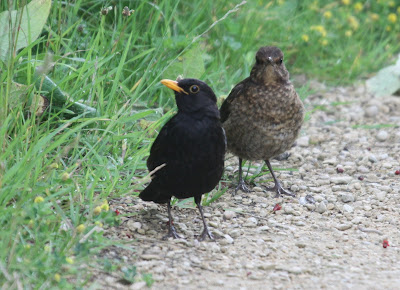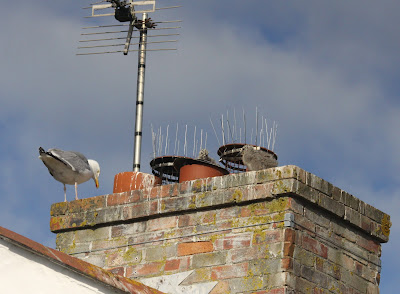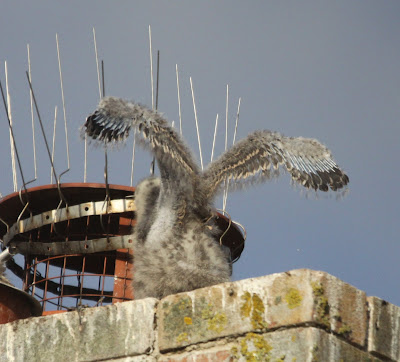The self impossed day at at home yesterday seemed like a fortnight, but at least quite a few outstanding chores were completed. Today, in sharp contrast it was dry, the sun was shining by 06:00 but it remained blustery, perfect! In the cemetery the wild flowers remain in tact, and
GOLDCREST, Coal Tit, Chaffinch and Chiffchaff were the most audible songsters.
Along the western path to Radipole the apples, here as a result of the clearance of bomb damaged buildings in WWII the rubble used to form the footpaths, are starting to swell and taking on a russet colour so won't be long before I'll need a bag.
Up ahead there sounded to be c2 LESSER WHITETHROATs, which was soon confirmed, but quickly moving on to find the object of today's visit.
A few SOUTHERN MARSH ORCHIDs had been reported to me a few days ago by Bowie and Sheila,
which seemed to be at their best for me.
An adult BLACKBIRD was feeding a fledged juvenile at the Concrete Bridge,
while this adult GREAT CRESTED GREBE cruised close by. No sign of any youngsters, but given the amount of rain in recent weeks even the nests of these hardy waterbirds are likely to have been washed out.
Another worthwhile sighting were c2 BEARDED TITs close to Edward's Folly and so special are these birds it was thought worthy of posting
A sight I wasn't at all happy to behold were the missing cap stones from the low retaining wall close to the Viewing Shelter (Edward's Folly as built by Bowie Edwards) a few of which had been removed some time ago.
It may just be that the RSPB have taken them away to re-dress them, but it is thought highly unlikely, my money is on the vandal!
COMMON SPOTTED ORCHID also at Radipole.
On leaving the reserve c2 COMMON TERNs were 'fishing' close to the main bridge, but soon disapeared in the direction of the Colony at Lodmoor.
In the Backwater, which is Weymouth's Inner Harbour, there were a healthy number of GREY MULLET and I was just in time to catch the first (06:20) bus to Portland.
A stop at Ferry Bridge produced just singles of RINGED PLOVER and Curlew, c4 Common Terns and the Little Terns at the Colony as usual.
Another bus, another destination, this time Southwell Village, where a family of HERRING GULLs
seemed little deterred by the array of anti-Gull spikes.
It was nicely timed luck that this shot was taken of one of the young birds stretching its equally young wings, what a marvelous sight those developing feathers make?
Climbing Bill Hill the first Butterfly of the day was this RED ADMIRAL, but I was hoping for better later at the Obs Quarry where Lulworth Skipper had been seen during the week. At the Observatory things were still very quiet bird-wise, especially on the land, while to seaward both Manx and Balearic Shearwaters had been seem along with a small flock of Common Scoter. However, the interest once again lay in the Moth Traps where again numbers were fairly high and today there was a hint of scarcity. I have had an interest in these amazing insects for 3 decades now, but am still intregued by many of the names.
THE SNOUT ANGLE SHADES
THE MAGPIE
EARLY THORN
THE SHARK, and the element of scarcity was provided by
THE DELICATE x 2. A search for the Lulworth Skipper was fruitless, but the sea in its fury always provides me with a feeling of excitement and today was no exception as
one of the smaller class of Life Boat rounded Bill Point and the Trinity House Obelisk, then heading out into West Bay.





































































